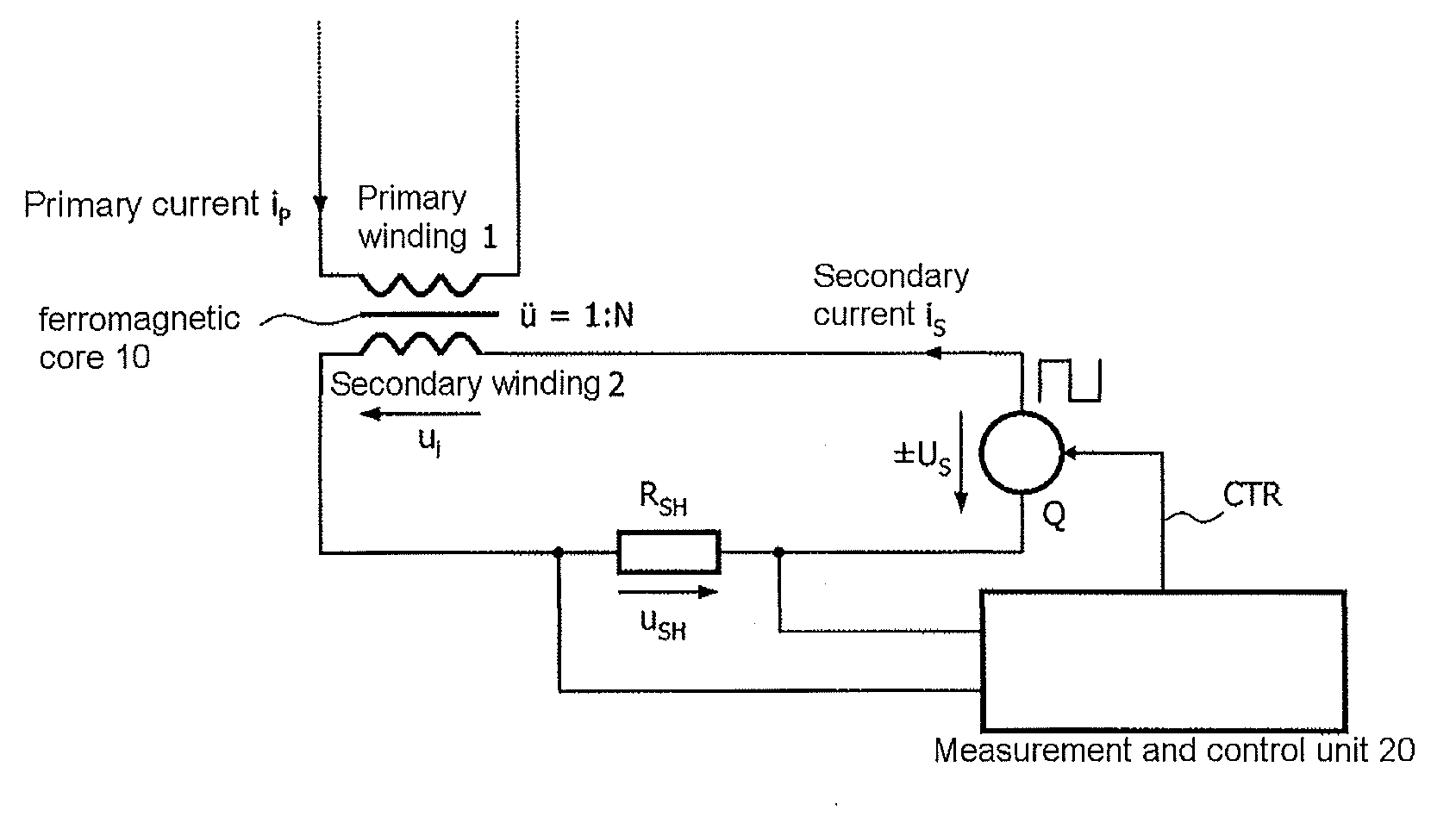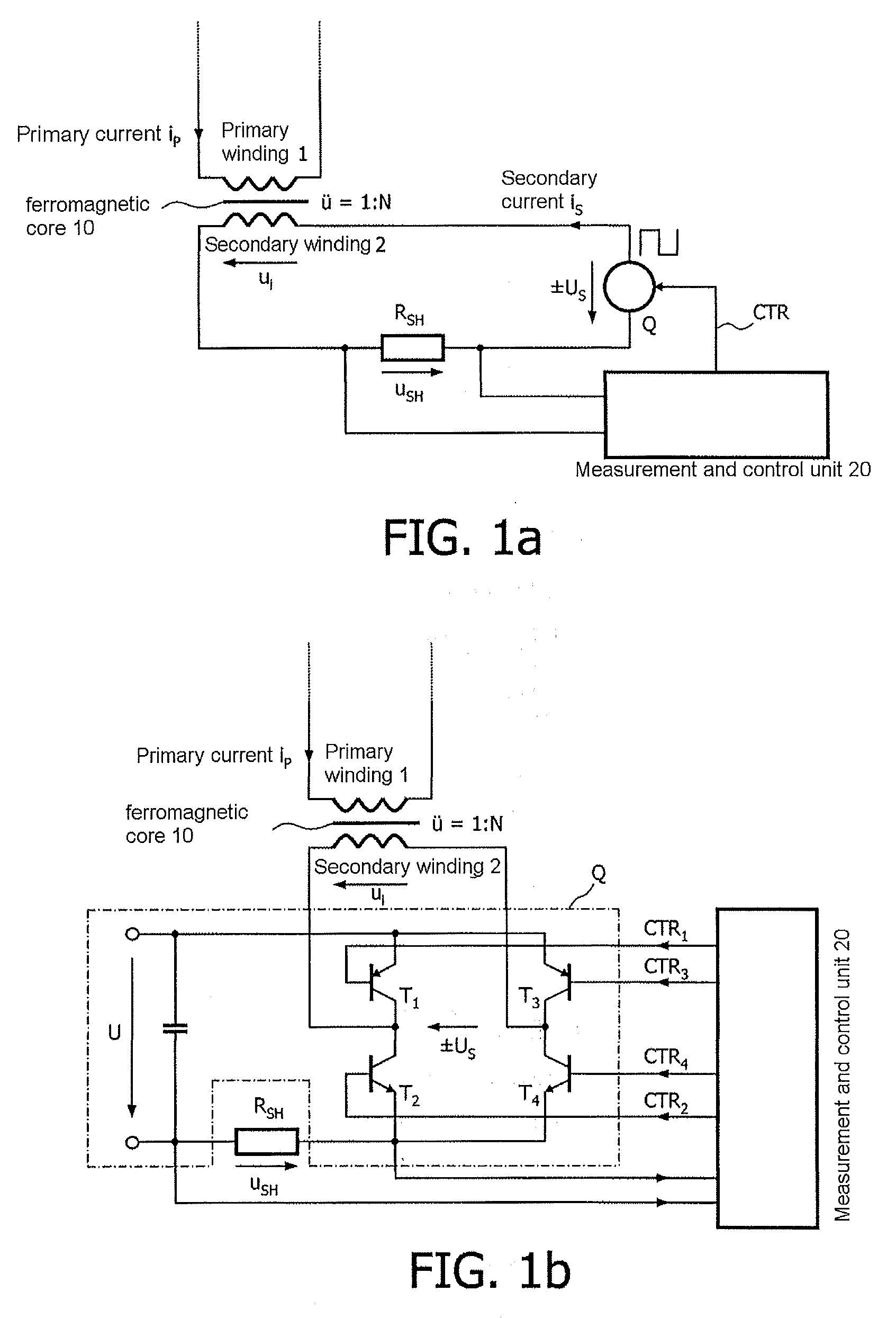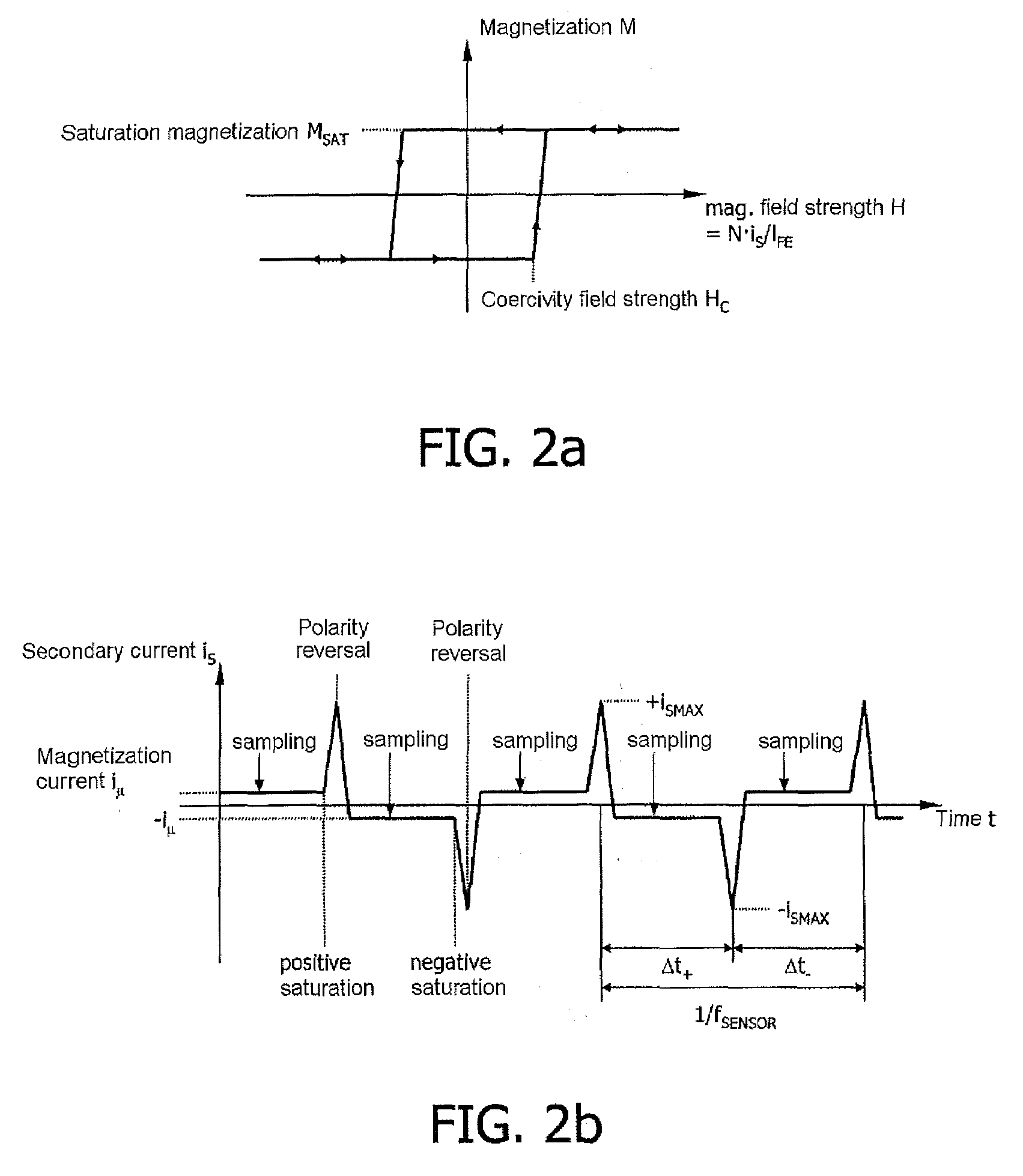Current sensor arrangement for measurement of currents in a primary conductor
a current sensor and conductor technology, applied in the direction of amplifiers, base element modifications, instruments, etc., can solve the problems of inability to achieve the effect of reducing inductance, high cost-effectiveness of sensors, and reducing inductan
- Summary
- Abstract
- Description
- Claims
- Application Information
AI Technical Summary
Benefits of technology
Problems solved by technology
Method used
Image
Examples
Embodiment Construction
[0025]FIG. 1a uses a diagram to show the basic design of a compensation current sensor without any hysteresis error. The current to be measured (primary current iP) flows through a primary winding 1 which is magnetically coupled to a secondary winding 2 (number of turns N) via a soft-magnetic and, for example, unslotted core 10. By way of example, the primary winding 1 may comprise one single turn, that is to say the primary winding 1 is formed from a conductor which is passed through the core 10 (number of turns 1). The secondary winding 2 is connected in series with a controlled voltage source Q, which produces the secondary current iS through the secondary winding and which is capable of reversing polarity. In order to measure the secondary current iS, a shunt resistor RSH is connected between the secondary winding 2 and the voltage source Q. The voltage USH across the shunt resistor RSH is supplied to a measurement and control unit 20, which also provides a control signal CTR fo...
PUM
 Login to View More
Login to View More Abstract
Description
Claims
Application Information
 Login to View More
Login to View More - R&D
- Intellectual Property
- Life Sciences
- Materials
- Tech Scout
- Unparalleled Data Quality
- Higher Quality Content
- 60% Fewer Hallucinations
Browse by: Latest US Patents, China's latest patents, Technical Efficacy Thesaurus, Application Domain, Technology Topic, Popular Technical Reports.
© 2025 PatSnap. All rights reserved.Legal|Privacy policy|Modern Slavery Act Transparency Statement|Sitemap|About US| Contact US: help@patsnap.com



